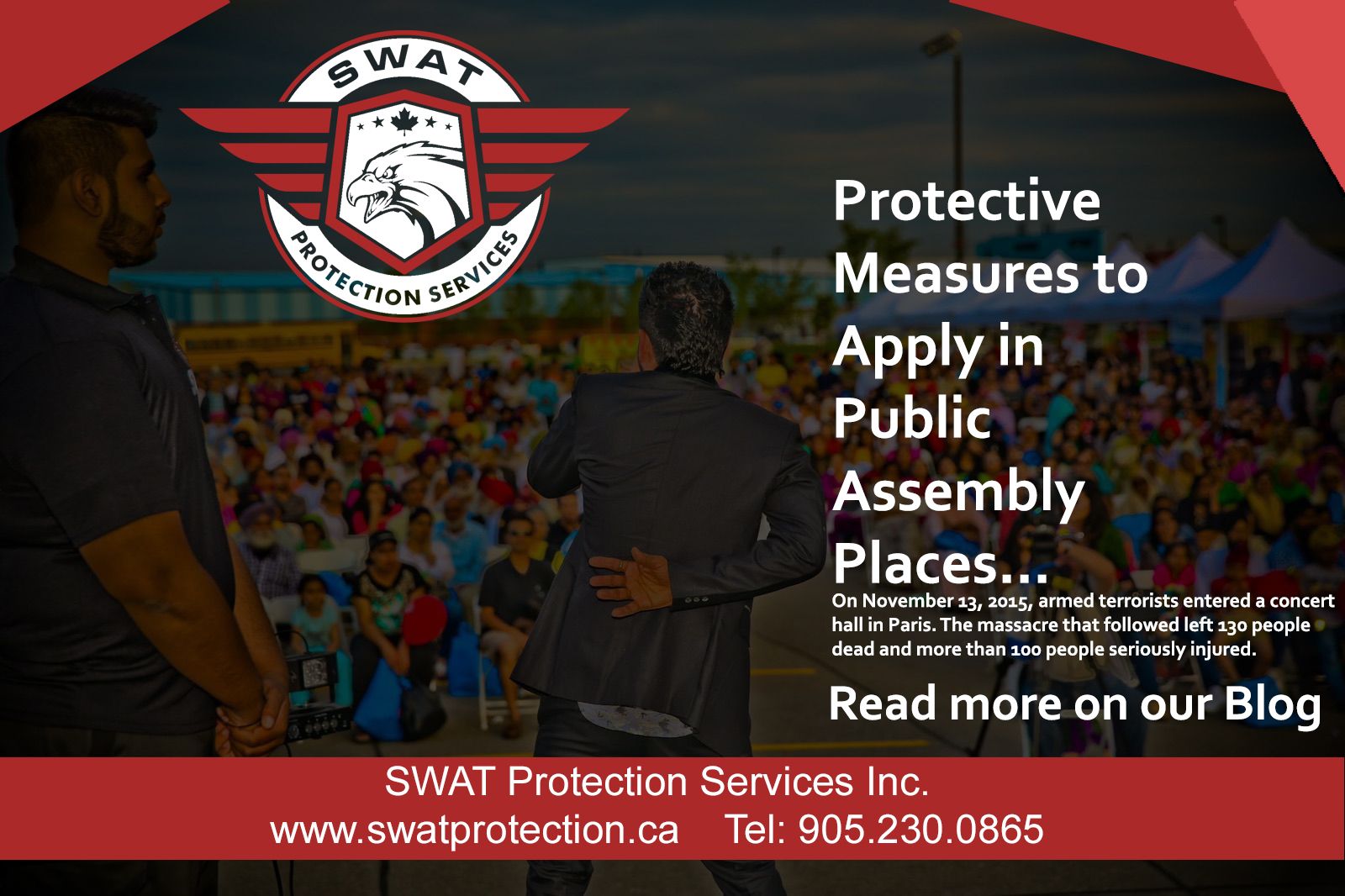On November 13, 2015, armed terrorists entered a concert hall in Paris. The massacre that followed left 130 people dead and more than 100 people seriously injured.
As the security threats in public places continue to increase globally, it is necessary to equip public areas with protective measures. The following guidelines will help you understand common vulnerabilities and protect you at the time of a security lapse.
Indicators of Terrorist Activity
If you sense the following indicators in your surroundings, make sure to move away from them and inform the responsible authorities. Make sure to avoid yelling or performing any act that may alert the terrorist.
• People with bulky clothes and jackets in crowded areas
• Illegally parked or unattended vehicles
• Unattended packages like boxes, briefcases, and backpacks
• People trying to illegally cross restricted areas
• People trying to get unauthorized access to unusual places like HVAC unit access points
Some more indicators include:
• People loitering around restricted areas (they may be placing explosive materials or hiding arms)
• Changing behavior of employees
• Increased threats to the organization
• Sudden loss or theft of security personnel’s weapons
• People carrying cameras and shooting unusual sites
Employee Monitoring
Anyone of your old or new employees may be involved in terrorist activity at a public place. You should monitor your employees and watch out for the following:.
• Entry of unfamiliar crew or employees (These may include cleaning guys and office boys)
• Someone inquiring about the company from your employees on-site or off-site
• Placement of unidentified alarms and cameras in the office
Preventive Measures
The following preventive measures will help you reduce the risk of terrorism in public places.
Planning
• Make sure to plan all public gatherings ahead. Point out all security checkpoints and install hi-tech security devices at these points.
• Make sure to prepare workers and employees to cope with emergency situations.
• Make sure to hire responsible people for supervision of the employees and security areas.
Access and Barriers
• Restrict non-public areas to avoid unnecessary or illegal access to sensitive areas. Designate security personnel in these areas or restrict them with public signs.
• Install as many electronic security devices on security checkpoints as possible.
• Make sure that the building is not directly connected with the surrounding buildings. Make sure to place barriers on the points of connection.
• Issue photo identification, thumb impression, card detection, and other types of security measures at the entrance. Make it compulsory for employees as well as regular visitors.
• Install security gates and locks on all easy- access areas.
• Install unbreakable barriers on HVAC units.
Monitoring
• Use CCTV Cameras to monitor public places.
• Hire a responsible security organization to deal with security emergency situations and avail surveillance services.
